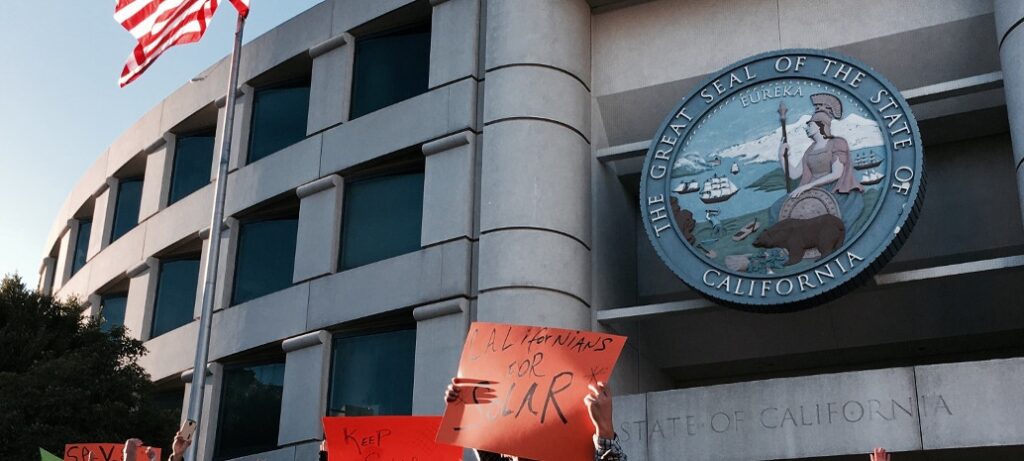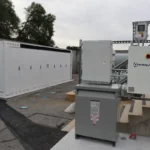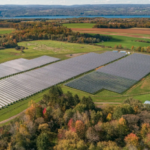Key takeaways:
- The CPUC has formally opened its NEM-3 proceeding, which will redefine the rules for the Net Energy Metering (NEM) tariff in California.
- The recently released NEM 2.0 lookback study concluded that NEM 2.0 customers have net benefited from the structure and ratepayers have seen increased rates as a result.
- The NEM-3 proceeding is expected to take roughly 15 months. The CPUC has said they expect to adopt the successor tariff decision no later than December 31, 2021.
- The final NEM-3 decision will have far-reaching impacts on the future of customer-sited solar and energy storage projects in California and beyond.
The California Public Utilities Commission (CPUC) has officially commenced their “NEM-3” proceeding, which will establish the successor Net Energy Metering (NEM) tariff to the “NEM 2.0” program in California. This is a highly anticipated and high stakes proceeding that will effectively modify the rules for the NEM tariff in California, arguably the single most important policy mechanism for customer-sited solar over the last decade. In the CPUC’s recent order instituting rulemaking (OIR) filing, they stated “the major focus of this proceeding will be on the development of a successor to existing NEM 2.0 tariffs. This successor will be a mechanism for providing customer-generators with credit or compensation for electricity generated by their renewable facilities that (a) balances the costs and benefits of the renewable electrical generation facility and (b) allows customer-sited renewable generation to grow sustainably among different types of customers and throughout California’s diverse communities.”
This successor tariff proceeding was initiated by Assembly Bill 327, which was signed into law in October of 2013. AB 327 is best known as the legislation that directed the CPUC to create the “NEM 2.0” successor tariff, which was adopted by the CPUC in January of 2016. The original Net Energy Metering program in California (“NEM 1.0”) effectively enabled full-retail value net metering “allowing NEM customers to be compensated for the electricity generated by an eligible customer-sited renewable resource and fed back to the utility over an entire billing period.” Under the NEM 2.0 tariff, customers were required to pay charges that aligned them more closely with non-NEM customer costs than under the original structure. The main changes adopted when the NEM 2.0 was implemented were that customer-generators must: (i) pay a one-time interconnection fee; (ii) pay non-bypassable charges on each kilowatt-hour of electricity they consume from the grid; and (iii) customers were required to transfer to a time-of-use (TOU) rate.
NEM 2.0 Lookback Study
The commencement of the NEM-3 OIR was preceded by the publishing of a 318-page Net Energy Metering 2.0 Lookback Study, which was published by Itron, Verdant Associates, and Energy and Environmental Economics. The CPUC commissioned study had been widely anticipated and was expected to act as the starting reference point for the successor tariff proceeding. Verdant also hosted a webinar, which summarized the study’s inputs, assumptions, draft findings, and results.
The study utilized several different tests to study the impact of NEM 2.0. The cost-effectiveness analysis tests, which estimate costs and benefits attributed to NEM 2.0 include (i) total resource cost test, (ii) participant cost test, (iii) ratepayer impact measure test, and (iv) program administrator test. The evaluation also included a cost of service analysis, which estimates the marginal cost borne by the utility to serve a NEM 2.0 customer.
The opening paragraph of the report’s executive summary stated that “overall, we found that NEM 2.0 participants benefit from the structure, while ratepayers see increased rates.” In every test that the author’s conducted the results generally supported this conclusion for residential customers. There were some exceptions in their findings. For example, in the cost of service analysis, the report stated that “residential customers that install customer-sited renewable resources on average pay lower bills than the utility’s cost to serve them. On the other hand, nonresidential customers pay bills that are slightly higher than their cost of service after installing customer-sited renewable resources. This is largely due to nonresidential customer rates having demand charges (and other fixed fees), and the lower ratio of PV system size to customer load when compared to residential customers.”
Timeline and Schedule for the NEM-3 Proceeding
The preliminary schedule that the CPUC laid out in their OIR estimates that the proceeding will take roughly 15 months in total. The key dates the CPUC outlined are:
- November 2020, pre-hearing conference
- December 2020, scoping memo and ruling
- Fall/Winter 2020, development of guiding principles and program elements
- Spring/Summer of 2021, development and analysis of successor tariff contract options
- November 2021, Proposed Decision on successor tariff contract
- December 2021, expected adoption for successor tariff no later than the end of 2021
The real meat of the proceeding, where parties will present their proposals for what they believe the successor tariff should be and really show their hand will not begin until the Spring of 2021. So we’re still a little ways away from seeing the proposals that the key parties to this proceeding, like the Investor Owned Utilities (PG&E, SCE, SDG&E), solar and storage advocates (SEIA, CALSSA, Vote Solar), and ratepayer advocates like TURN will submit.
What’s ETB’s take on how NEM-3 will turn out
While the outcome for new successor NEM tariff is anyone’s guess at this point, some industry policy folks are starting to speculate. We think it is safe to assume that the value of exported energy will get reduced. How much and the mechanism for how exports get valued remains to be seen. Based on the findings from the look-back study, it seems like the reduction in export value will be more severe than what happened when NEM 2.0 got implemented. In NEM 2.0, non-bypassable charges, which are volumetric charges that must be paid on all imported energy and cannot be netted-out by exports, only equated to roughly $0.02 to $0.03/kWh.
Given that the value of exports will almost certainly get reduced, we expect that to be bullish for energy storage. Energy storage attachment rates with solar are already steadily rising in California. By the time NEM-3 starts getting implemented, likely in 2022, we think storage attachment rates will likely aggressively escalate further. We would not be surprised to see future storage attachment rates in California look like the Hawaiian market today, which are upwards of 80% for certain types of customers and applications. Two big questions on our mind are: (i) will the NEM 3.0 rules be different for different customer class: residential, CARE (e.g., low-income or disadvantaged communities), and commercial & industrial; (ii) will the CPUC introduce some sort of glide path or phased-in implementation approach?
The outcome of this proceeding will have far-reaching implications on the future of customer-sited solar and energy storage in California. The NEM-3 outcome in California may likely serve as a precedent for other states and utility territories that are expected to redesign their Net Energy Metering tariffs in the coming years.



